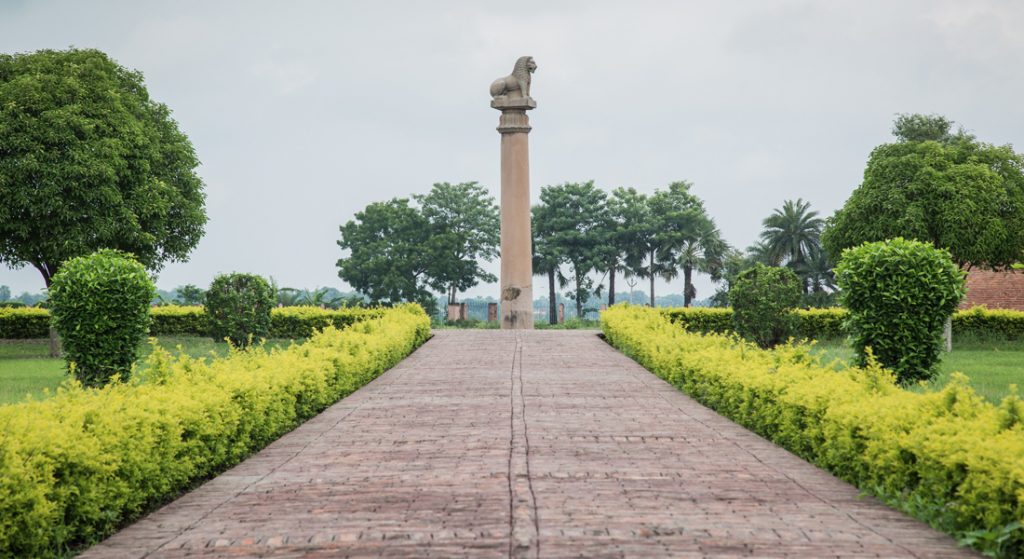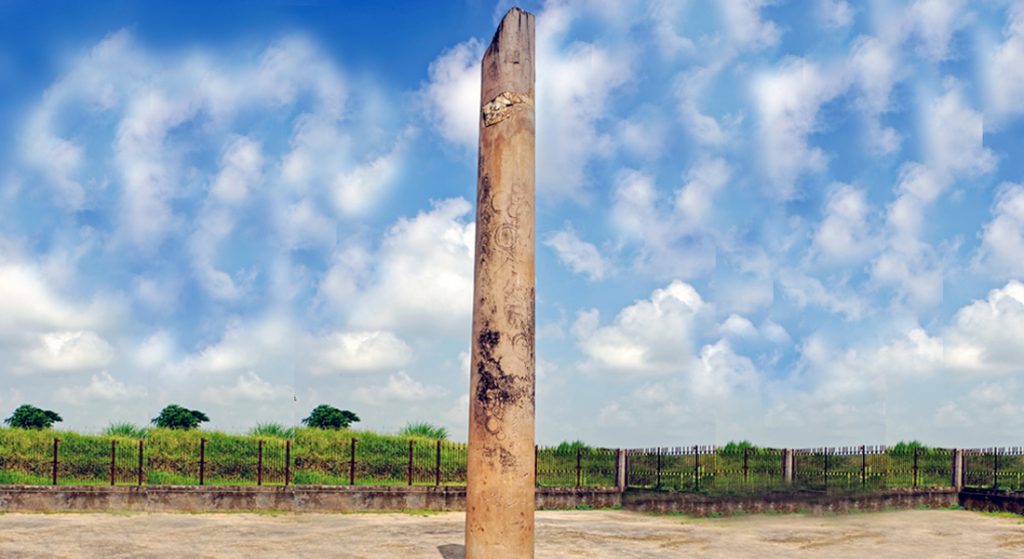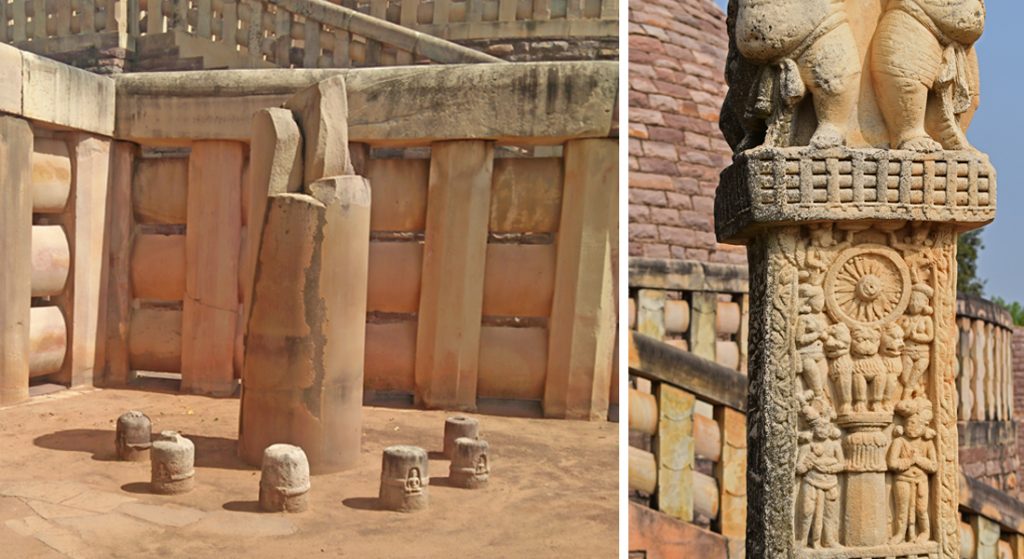
Ashoka Pillars of India
The Ashoka pillars are a series of columns erected by the Indian emperor Ashoka in the 3rd century BCE to commemorate his reign and spread his message of Buddhism and non-violence. The pillars, some of which still survive today, serve as important historical artefacts and tourist attractions, providing insight into the culture and politics of ancient India.
Mauryan King Ashoka was one of the greatest kings to have ruled ancient India. He ruled for about 35 years and left behind a rich legacy. His principles of Dharma were made immortal through these pillars, which he called ‘Pillars of Dharma’. On these pillars, he inscribed seven edicts of Dharma that he believed were essential to human life. The exact number of pillars erected by Ashoka is not known. At present, about 15 pillars erected by Ashoka are known. Some of them are broken, and some have only the capital (the top portion) remaining. Below is a look at some of the Ashokan pillars.
Vaishali, Bihar: One of the beautiful Ashokan pillars that visitors are privileged to view in its complete form. Standing very close to the famed Stupa of Vaishali, the pillar is void of any edicts. The stupa was a monastery that also contained a pond named Devkund, which was a sacred coronation site. It is believed that Buddha stayed in this monastery and gave his last sermon in Vaishali from here, indicating the time of his nirvana before embarking on his last voyage. The pillar was built by Ashoka to commemorate his victory in the Kalinga War. The pillar has a single lion as its capital, and it is facing north in the direction Buddha took on his last voyage to Kusinaga (now Kushinagar). This pillar, also called the Lion Pillar, is about 60 feet tall.

Delhi: This pillar was originally erected by Ashoka in Topra Kalan, Uttar Pradesh. It was shifted to Delhi and placed at the palace of Kotla during the 14th century by Islamic rulers. This pillar has Ashokan edicts, but its capital is missing. There are two inscriptions from the 16th century engraved just below the Ashoka edicts.

Lauria Nandangarh, Bihar: This historical place dates back to 2200 years and has more than ten mounds that are yet to be explored and excavated. This pillar is 32 feet high and is engraved with Ashoka edicts. A single lion is placed atop the pillar on a circular base. About 65 kilometres south of this village is the place named Lauria Araraj, and another Ashoka pillar built 2270 years ago is seen here. This pillar with Ashoka edicts is about 40 feet tall, and its capital is missing.

Prayagraj, Uttar Pradesh: Originally erected in Kaushambi, Bihar, it was shifted to Prayagraj by Islamic rulers. Special permission is needed to visit this pillar as it is now in an area controlled by the Indian army. This pillar is about 60-70 feet tall, and its capital is missing. It is one of the very few pillars that have Ashoka edicts.

At Sanchi, Madhya Pradesh, and Sarnath, Uttar Pradesh: The Ashokan pillars at the revered Buddhist pilgrimage sites of Sanchi and Sarnath have only the capitals remaining, which were found during excavation. At both of these places, the original capitals have four lions facing four directions and are kept at respective museums. As far as the pillar is considered, it is not to be seen in Sanchi, but at Sarnath, its pieces are seen in the museum. The lion from Sarnath is now the national emblem of India, and the Ashoka Chakra (Dharma Chakra) wheel at its base is what we see on our national flag.



